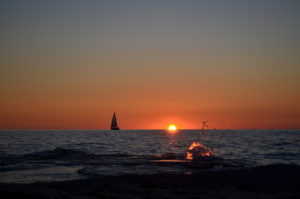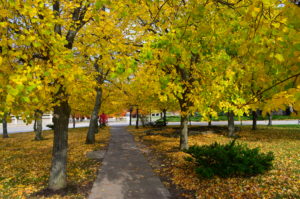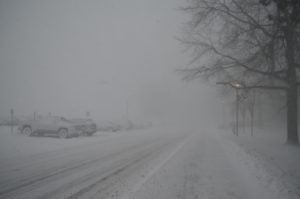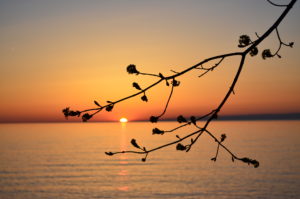Hello, Oswego!
For those of you who are new, I am Matthew Seymour, a junior meteorology student here at SUNY Oswego. I’ve always been fascinated with weather, and am an avid outdoorsman and photographer. More about me here!
Dare I say, but it’s almost the beginning of the fall 2017 semester. With new student move-in just 2 short weeks away, packing lists are being made and back-to-school shopping is in full swing.
Some of you may have heard of Oswego’s, ahem, weather. Now, while it is a myth that there were once chains put up around campus to help students push through the wind, it sure is a location featuring a lot of weather extremes. In the rest of this post, I’ll give a brief rundown of the “typical” conditions one will experience during an academic year at SUNY Oswego.
In late August, when students return to campus and classes just start, weather conditions are usually tranquil and summer-like. Rain is relatively infrequent, but when it does rain, it’s usually in the form of a thunderstorm. September features ever-shortening daylight, slowly retreating temps, and a shift away from summer storms.
October encompasses increasing wind and rain, pleasant temps, and the always-magnificent fall foliage show. Mid-November is the average period to watch for the first snowfall. (It has occurred on Nov. 20 and Nov. 23 the past two years.) Late November is when the real winter sets in, with mostly frozen precipitation, nearly-constant wind of some fashion, and cold temperatures.
December, January and early February take the lion’s share of lake-effect snow in Oswego. A normal winter sees about 140″ fall on the city. Wind remains frequent, and when combined with wintertime cold, wind chills are often below zero.
March, April and May feature the most frustrating weather. While temperatures do increase, late-season snow remains possible, and the “lake breeze” phenomenon works to hold down afternoon temps, particularly in April and May. Summer does win out, eventually, no matter what. Thanks, Sun!
For those who like numbers, here you go:
- Aug/Early Sep: Highs 75-85. Lows 60-65. A few days with rain or storms.
- Mid-Late Sep: Highs 65-75. Lows 50-55. A few days with rain or storms.
- Oct: Highs 50-65. Lows 40-50. Some days with rain.
- Nov: Highs 35-50. Lows 30-40. Frequent rain and some snow.
- Dec: Highs 30-40. Lows 20-30. Frequent snow, some rain.
- Jan: Highs 20-30. Lows 10-20. Frequent snow.
- Feb: Highs 15-30. Lows 5-15. Some snow events.
- Mar: Highs 30-55. Lows 20-35. Some snow and rain events.
- Apr: Highs 50-65. Lows 35-45. Some rain, maybe an odd late season snow.
- May: Highs 60-70. Lows 40-50. A few days with rain or storms.
So, there are many ways that one could prepare for such exciting weather. Hoodies and lighter jackets are perfect for that in-between fall and spring weather, however a rain jacket is a must (umbrellas will be destroyed by wind!), as well as a good set of winter coat, hat, gloves, scarf, and boots for when winter comes. Always bring warmer clothes and winter gear to college earlier than you think you’d need them, and always leave a couple summer outfits around for that odd warm fall or spring day.
See y’all in a couple of weeks. In the meantime, soak up those last rays of summer break!






